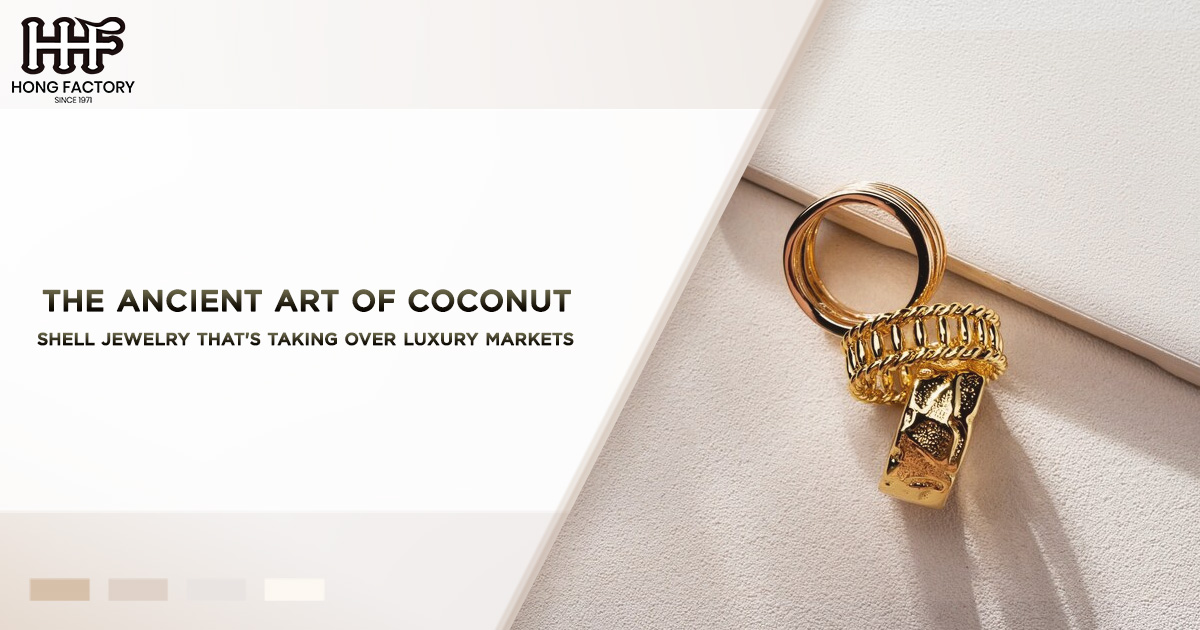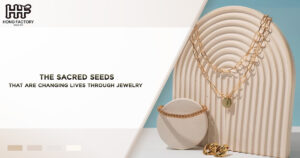In a world where sustainability is no longer a trend but a necessity, the luxury market is turning its gaze toward materials that not only exude elegance but also uphold environmental responsibility. Among these, a surprising contender has emerged – coconut shell jewelry. What was once considered agricultural waste is now being transformed into stunning, high – end adornments gracing the collections of luxury brands and eco – conscious consumers alike. This article delves into the fascinating journey of coconut shells from discarded remnants to prized tropical treasures, showcasing how this ancient craft is revolutionizing sustainable luxury.
From Waste to Wonder – The Transformation of Coconut Shells
Coconut shells, the hard, woody byproduct of coconut fruit harvesting, were historically discarded or burned as waste. Yet, for centuries, artisans in tropical regions have recognized their potential, carving them into functional household items, utensils, and decorative objects. Today, this ancient practice has evolved into a sophisticated art form, finding its place in the world of haute couture and fine jewelry.
The Appeal of Tropical Materials
Coconuts are synonymous with tropical paradises, conjuring images of sunlit beaches and lush greenery. Their shells, with their natural textures and earthy hues, carry a raw, organic charm that appeals to modern aesthetics. Unlike synthetic materials, coconut shells bring an intrinsic connection to nature, making them a coveted resource for creating tropical materials in jewelry design.
Their lightweight structure, combined with remarkable durability, makes coconut shells ideal for crafting intricate jewelry pieces. When polished, the shell reveals a smooth, glossy surface with unique grain patterns, making each piece one – of – a – kind—a feature that resonates deeply with the exclusivity sought in the luxury market.
The Ancient Craft of Coconut Jewelry
The art of crafting jewelry from coconut shells is as old as the cultures that first cultivated the coconut palm. Across Southeast Asia, the Pacific Islands, and parts of Africa, artisans have long used coconut shells to create necklaces, bracelets, earrings, and amulets, often embellishing them with intricate carvings or combining them with other natural materials like wood, bone, and shells.
Traditional Techniques
The traditional crafting process begins with carefully selecting coconut shells of the right thickness and quality. The shells are cleaned, cut, and sanded to achieve a desired shape and texture. Intricate designs are then etched or carved into the surface, often drawing inspiration from local flora, fauna, and cultural motifs.
By incorporating age – old techniques passed down through generations, artisans ensure that each piece of coconut jewelry carries a story—a tangible connection to heritage and tradition. This rich history is now being embraced and reimagined by contemporary designers who blend traditional
Coconut Jewelry Meets Sustainable Luxury
The rise of sustainable luxury has been a driving force behind the resurgence of coconut shell jewelry. In an era where consumers are increasingly aware of the environmental and social impact of their purchases, the demand for eco – friendly alternatives in fashion and jewelry has skyrocketed. Coconut jewelry perfectly embodies the principles of sustainability –
- Waste Utilization – By repurposing coconut shells that would otherwise contribute to waste, this craft minimizes environmental impact.
- Low – Impact Production – The crafting process relies predominantly on manual labor and minimal energy, reducing carbon emissions.
- Biodegradability – Unlike plastic or metal jewelry, coconut shell pieces are biodegradable, aligning with the principles of circular economy.
- Empowering Communities – Coconut jewelry production often supports local artisans in tropical regions, providing them with a sustainable source of income while preserving cultural practices.
Luxury with a Conscience
Luxury is no longer defined solely by exclusivity and high price tags—it now encompasses ethical sourcing, craftsmanship, and environmental stewardship. Brands and designers incorporating coconut jewelry into their collections are aligning themselves with these values, appealing to a new generation of consumers who prioritize purpose over opulence.
The Modern Revival – Coconut Jewelry in High Fashion
Contemporary designers and brands have taken the humble coconut shell and elevated it to the realm of high fashion. By combining it with precious metals like gold and silver, or pairing it with gemstones, they are creating striking pieces that blur the line between tradition and innovation.
Design Trends
Modern coconut jewelry designs are incredibly versatile. From minimalist, geometric shapes to bold, statement pieces, the material lends itself to a wide range of styles –
– Natural Aesthetics – Designers emphasize the organic beauty of the shell, showcasing its natural patterns and earthy tones.
– Mixed Materials – Coconut shells are often paired with other tropical materials such as abalone shells, bamboo, and recycled wood to create a cohesive, eco – friendly aesthetic.
– Cultural Fusion – Incorporating traditional motifs with contemporary design elements, these pieces celebrate both heritage and modernity.
Celebrity Endorsement and Luxury Appeal
Coconut shell jewelry has also found favor among celebrities and influencers who champion sustainable fashion. Red carpet appearances featuring coconut jewelry have further elevated its status, proving that eco – conscious choices can be both glamorous and impactful.
Challenges and Opportunities in the Coconut Jewelry Market
Despite its growing popularity, the coconut jewelry industry faces several challenges. Sourcing high – quality coconut shells, maintaining artisanal craftsmanship at scale, and competing with cheaper, mass – produced alternatives are some of the hurdles that must be addressed. However, these challenges also present opportunities for innovation and growth.
Promoting Artisanship
One of the most significant opportunities lies in promoting the artisans behind the craft. By highlighting their stories and celebrating their skills, brands can create a deeper connection between consumers and the products they purchase. Initiatives that invest in training and capacity – building for artisans can also help preserve traditional crafts while meeting the rising demand.
Expanding Market Reach
As awareness of sustainable luxury grows, so does the potential for coconut jewelry to reach global markets. E – commerce platforms and collaborations with international designers can help bring this ancient art to a wider audience, ensuring its continued relevance in the modern world.
The Future of Coconut Shell Jewelry
The transformation of coconut shells from waste to luxury material is a testament to the power of creativity and sustainability. As the luxury market continues to evolve, coconut jewelry stands out as a shining example of how traditional crafts can be reimagined for contemporary tastes.
By embracing tropical materials and championing sustainable luxury, the industry is not only preserving a rich cultural heritage but also setting a benchmark for responsible design. Whether it’s a simple pendant or an intricate statement piece, coconut shell jewelry carries a message of harmony—between nature and craftsmanship, tradition and innovation, beauty and purpose.
As this ancient art continues to gain momentum, one thing is clear – coconut jewelry is not just a trend—it’s a movement. And in a world yearning for balance and authenticity, it’s a movement that’s here to stay.




